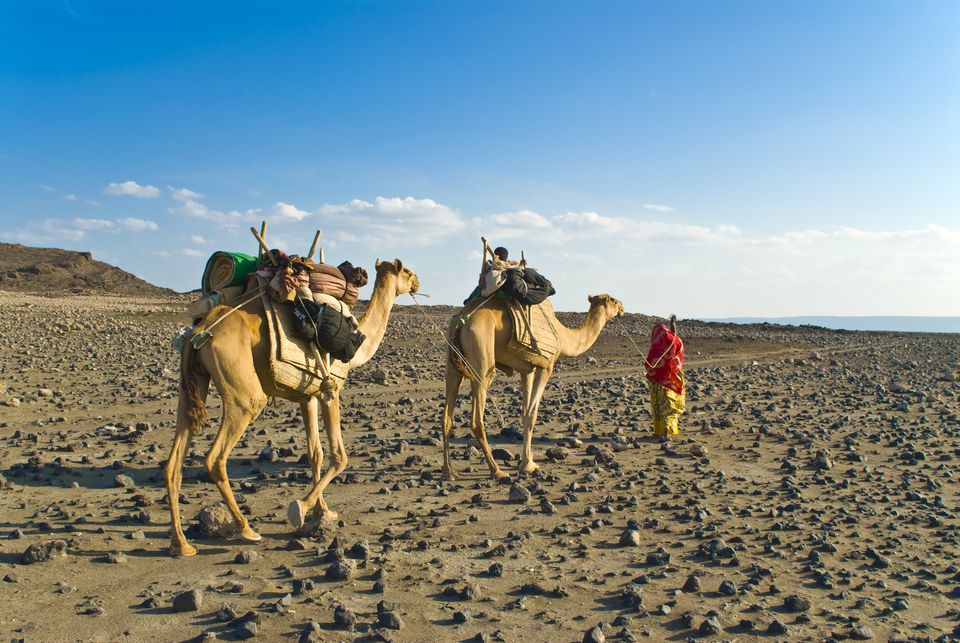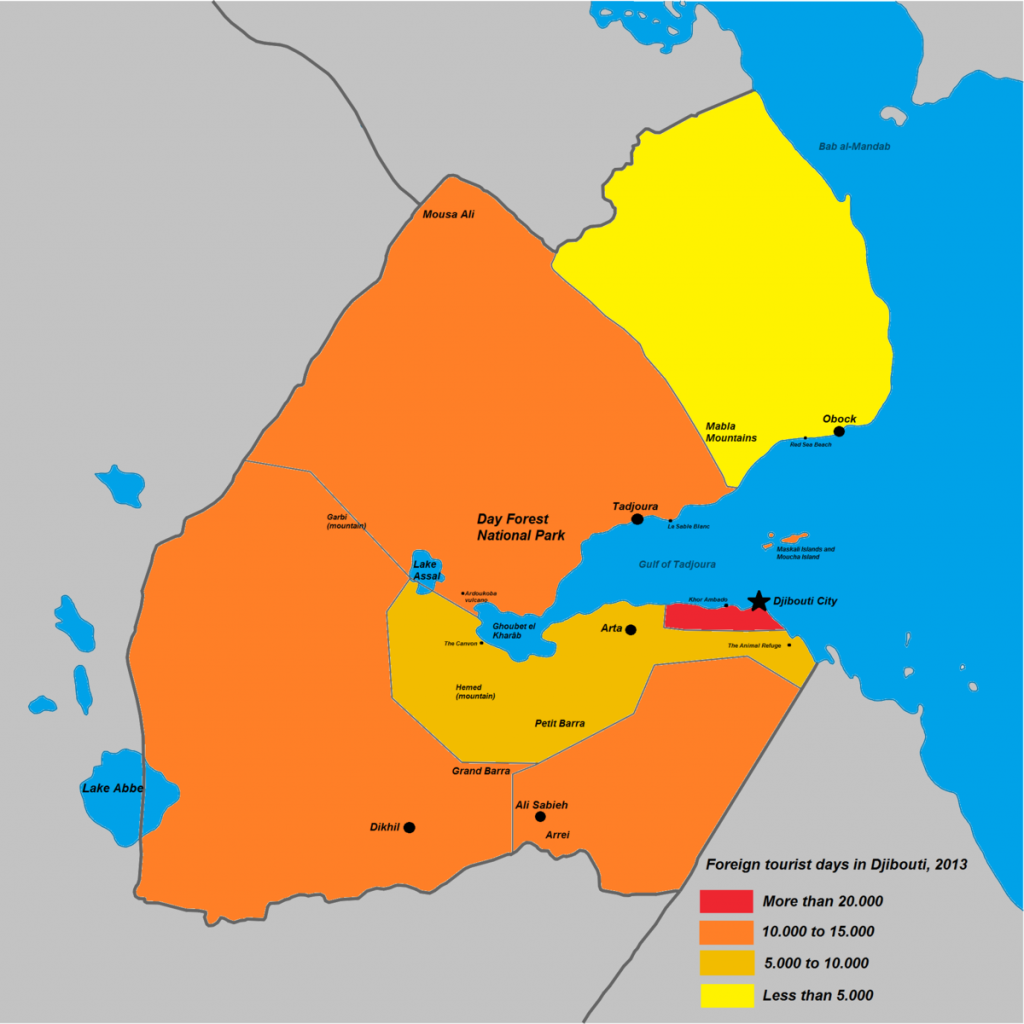Djibouti is a tiny nation sandwiched between Ethiopia and Eritrea in the Horn of Africa. Much of the country remains undeveloped, and as such it’s a fantastic destination for eco-tourists looking to get off the beaten track. The interior is dominated by a kaleidoscope of extreme landscapes ranging from plunging canyons to salt-encrusted lakes; while the coast offers excellent scuba diving and the opportunity to snorkel alongside the world’s largest fish.
The country’s capital, Djibouti City, is an urban playground on the rise with one of the region’s finest culinary scenes.
Location:
Djibouti is part of East Africa. It shares borders with Eritrea (to the north), Ethiopia (to the west and south) and Somalia (to the south). Its coastline borders the Red Sea and the Gulf of Aden.
Geography:
Djibouti is one of the smallest countries in Africa, with a total area of 8,880 square miles/ 23,200 square kilometers. In comparison, it is slightly smaller than the American state of New Jersey.
Capital City:
The capital of Djibouti is Djibouti City.
Population:
According to the CIA World Factbook, Djibouti’s July 2016 population was estimated at 846,687. More than 90% of Djiboutis are under 55 years of age, while the country’s average life expectancy is 63.
Languages:
French and Arabic are the official languages of Djibouti; however, the majority of the population speaks either Somali or Afar as their first language.
Religion:
Islam is the most widely practiced religion in Djibouti, accounting for 94% of the populace. The remaining 6% practice various denominations of Christianity.
Currency:
Djibouti’s currency is the Djiboutian franc.
Climate:
Djibouti’s climate is hot all year round, with temperatures in Djibouti City rarely falling below 68°F/ 20°C even in winter (December – February).
Along the coast and in the north, the winter months can also be quite humid. In summer (June – August), temperatures often exceed 104°F/ 40°C, and visibility is reduced by the khamsin, a dust-laden wind that blows in from the desert. Rains are rare, but can be briefly intense especially in the central and southern interior.
When to Go:
The best time to visit is during the winter months (December – February), when the heat is at its most bearable but there is still plenty of sunshine. October – February is the best time to travel if you’re planning on swimming with Djibouti’s famous whale sharks.






